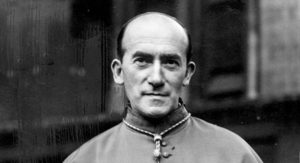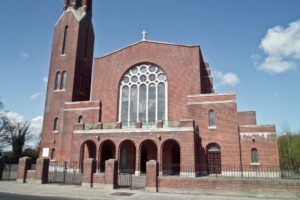Maurice Earls writes: John Charles McQuaid was archbishop of Dublin from 1940 to 1972. When he returned from Rome after the transformative Second Vatican Council in 1965, he declared to the faithful: “No change will worry the tranquility of your Christian lives.” Well, that wasn’t quite the case; a lot had changed. Even the sleepiest of Sunday church attendees must have noticed that the Latin Tridentine Mass had been replaced and the language of the Mass was now English.
McQuaid was being economical with the truth or perhaps he had mental reservations (mentalis restrictio) on the matter, which means he chose his words carefully knowing they would be understood in a particular way, which did not correspond with the facts. Mentalis restrictio is a late medieval concept in moral theology later much associated with the Jesuits.


John Charles McQuaid’s rule over the church and faithful in Dublin reached its zenith in the 1950s. Indeed the same could be said of Catholic social power throughout the country. It had taken many decades to reach that peak and a slow decline began shortly thereafter. It was to pick up pace from the 1990s.
In the 1950s, Archbishop McQuaid did not wish to see his authority subject in any way to outside modification. This led to occasional tensions with secular elements in society. One famous conflict, which McQuaid won hands down, was over the design of a new church on Bird Avenue in Clonskeagh in Dublin.
Postwar suburban expansion led to a wave of church-building in Dublin, all of which was controlled by the archbishop’s palace. One commentator has castigated most of these buildings as “monstrous sheds with only superficial historical references”. These buildings were erected quickly, as the church would not have wished anyone who had taken up residence in the suburbs to lose the habit of attendance at Mass. Since then of course Sunday Mass attendance has declined and many of these postwar churches are now too large for purpose. In 2017 it was announced that the massive Church of the Annunciation in Finglas, which had a capacity for over 3,000 people, was to be demolished and replaced with a building that could accommodate 350. The new design was also to include space for a coffee dock.
The historian Edward Thompson coined the phrase “the enormous condescension of posterity”. It is a useful concept and it would be difficult to find a better example than the prevailing myth which characterises the 1950s and preceding decades as a dark age, a time of church dominance and nothing else. In 1953-’54 modern architects, proud of such achievements as Busáras and Dublin Airport were excited by the prospect of a competition for the design of the proposed new church in Clonskeagh. There were no conditions attached other than that the church should have a capacity for 1,700 worshippers. The competition attracted a record 101 entries and the submissions which most impressed the assessors were all modernist in style, the winning entry being a design by Thomas J Ryan, a young architect employed with the OPW.


John Charles was committed to a strictly conservative idea of orthodoxy and had vetoed several works proposed for Dublin, including a statue of Our Lady of Fatima destined for O’Connell Street which he felt was insufficiently traditional. When he was shown the winning entry for the Clonskeagh church he declined to give approval and went quite a way down the list before he found a dull classical-style design of which he approved. This was the barn-like and non-descript neo-byzantine structure in red brick which was built and remains on Bird Avenue. The architectural community was outraged; feelings ran high and it is said that one leading architect was so disgusted that he abandoned his Catholic faith.
It has been suggested that the affair reflected the last dying kick of a debased classicism that had lost its soul. If this was so, Irish Catholicism was soon to change. In architectural style, the church was shortly to turn away from versions of classicism in favour of modernism. Change however was limited. The late twentieth century Catholic church in Ireland remained authoritarian and anti-democratic, but it did cease to be conservative. Indeed there emerged within the church a very substantial and leading cohort of rigorous modernisers. Even McQuaid adopted the new post-Vatican aesthetics.
The history and traditions of the Catholic church were not particularly valued by that church in the post Vatican decades. Indeed, there was an almost Soviet enthusiasm for and fetishisation of the new. There was, for example, no effort to preserve the eighteenth century persecution-era chapels that had survived and the wrecking ball was wantonly used on numerous rural nineteenth century churches. Interiors were radically reordered according to the new orthodoxy. The faithful were presented with all this as a fait acompli. Like the Henrician English Reformation, this was a top-down affair.
When the nineteenth century pulpit and altar rails in Carlow cathedral were stripped away, there was a popular protest which was met with a brick wall of clerical authority. One parishioner took an action in the Supreme Court to prevent this clerical iconoclasm. The case was lost and one of the great monuments of Catholic religious and political assertion, following the success of the emancipation struggle, was irreversibly damaged.
Ironically, progressive architects were to be the beneficiaries of the church’s radical modernism. In the decades following the Vatican Council, when exercises in modern architecture were few in Ireland, the church commissioned a good number of important modern churches in conformity with post-Vatican values but often also with local and historical references. They now constitute an important chapter in the history of modern Irish architecture.
17/3/2019



